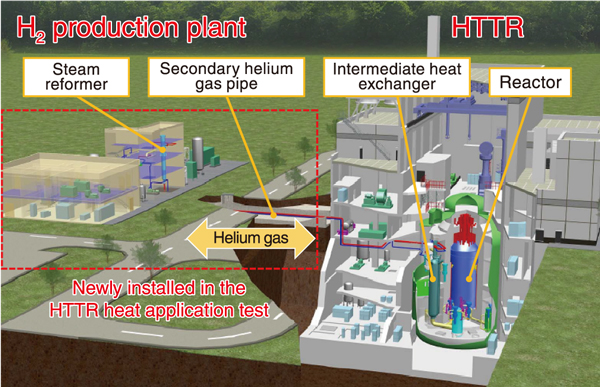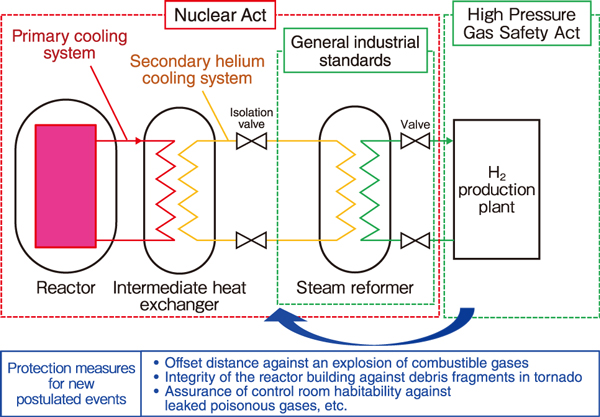
Fig.1 Bird's eye view of the HTTR heat application test facility

Fig.2 Demarcation boundary of applicable laws and standards, and protection measures for new postulated events
The early deployment of a High Temperature Gas-cooled Reactor (HTGR) with inherent safety features and high-temperature heat-supply capability for massive and competitive carbon-free hydrogen (H2) production is expected to realize a decarbonized society. However, the coupling of HTGR to an H2 production plant has not been achieved yet; therefore, the development of a safety design realizing safe coupling is a challenge.
JAEA is planning an H2 production demonstration test using a HTTR (high temperature engineering test reactor), which has achieved a reactor outlet coolant temperature of 950 ℃. We will construct an H2 production plant based on the methane steam reforming method (Fig.1), which connects to the HTTR. JAEA aims to establish a safety design for the safe coupling between a nuclear reactor plant and an H2 production plant based on licensing by the Nuclear Regulation Authority (NRA). The present study proposes a safety design philosophy for the test facility, including approaches to applicable laws and standards for the H2 production plant and conformity to the new Japanese regulatory requirements.
Conventional H2 production plants handling large amounts of high-pressure gas were built following general industrial standards to prevent disasters caused by high-pressure gas and to ensure public safety. Industries also expect that the general industrial laws are applicable to the design, construction, and operation of the H2 production plant in terms of economic competitiveness. Thus, general industrial laws such as the High Pressure Gas Safety Act are preferable for the H2 production plant instead of the Act on the Regulation of Nuclear Source Material, Nuclear Fuel Material and Reactors (Nuclear Act), which is generally applied to nuclear facilities under the premise of ensuring nuclear safety against abnormalities in the H2 production plant. The steam reformer will be designed, constructed, and operated under the Nuclear Act, as well as the general industrial standards, for which detailed technical requirements have already been developed for chemical plants (Fig.2).
The protection measures against new postulated events in the test facility were suggested based on the safety design philosophy of the HTTR. This safety design has passed a review to check conformity to the NRA requirements. In particular, the following measures were proposed: Setting an offset distance between the nuclear reactor building and the H2 production plant to maintain the explosion pressure outside the building, caused by the leakage of combustible gases (e.g., H2) from the H2 production plant, at less than 10 kPa; Assuring the integrity of the nuclear reactor building against missile fragments from a H2 production plant damaged by a tornado; and Assuring the control room habitability against the leakage of toxic gases such as carbon monoxide from the H2 production plant.
In future works, a modification plan for the HTTR and licensing process will be proceeded further.
(Takeshi Aoki)